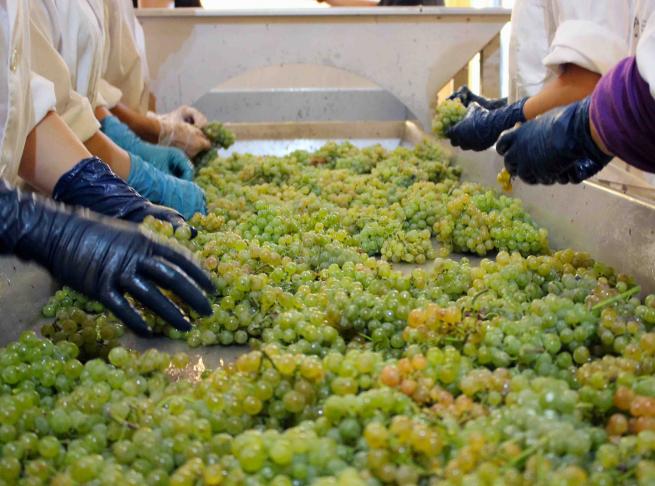20 de November
The Rías Baixas Designation of Origin Finishes the 2019 Harvesting Campaign with 32,401,591 kg. of Grapes

8th November 2019. The picking of the 2019 harvest in the Rías Baixas D.O. has finished with an overall crop size of 32,401,591 kilograms, sourced from the 21,872 vineyard plots within the Rías Baixas D.O., which today covers a total of 4,051 hectares (8.4 ha more than in 2018). This 2019 crop saw a drop of 16% in volume compared with the 2018 harvest. Rías Baixas winery owners are showing some concern at these levels of production, forecast to make 22 million litres of wine, since this amount will not reach the levels of sales volume of the last years and since wineries are carrying little stocks of previous vintages.
On a technical note, the 2019 harvesting season began on 28th August and stretched out until 11th October. This long period reflects favourable harvesting conditions that enabled growers to proceed with the picking stress-free, since the vines were in very good health and able to complete their ripening cycle successfully. As mentioned by the council’s Control and Certification department, “the grapes were brought into the cellars in good health and with good potential alcohol levels”. A vintage of high quality and with a very aromatic profile is therefore forecast. The Rías Baixas Wine Council technical manager, Agustín Lago, explained that “the average yields in this campaign are 7,997 kg/ha. It should be noted that the average yield over the last decade is 8,090 kg/ha, a figure therefore very close to that of the current vintage”.
The 5,177 vine growers producing grapes in this 2019 vintage harvested a total of 31,290,082 kg of the Albariño grape variety, which represents 96% of the grapes produced in the D.O. This proportion was completed by Caíño Blanco (0.83%) and Treixadura (0.67%). As for production according to subzone, O Salnés was the largest with 64% of the total, followed by Condado do Tea with 21% and O Rosal with 9.5%.
25 official crop supervisors, supported this year by 6 inspectors recruited by the Rural Area Council, were in charge of inspecting the 162 wineries to ensure that the harvest was conducted properly and that the official specifications were complied with.
Vine cycle
The 2019 growing season underwent adverse weather conditions which at the beginning of the cycle brought about very fast and uneven budding. Sudden changes in temperature during the months of March and April caused vine growth to slow to some extent. Spells of windy weather had a negative impact, damaging the early shoots, while localised hail at the end of April impacted the Condado Tea, O Rosal and O Salnés subzones, causing significant damage in the vines. Bad weather didn’t help the flowering process and led to poor fruit-set, resulting in some loss of crop and the formation of small, loose bunches. Stable weather conditions at last set in during August and September leading to successful veraison and a stress-free harvest.
- PRODUCTION BY GRAPE VARIETY AND SUBZONE (KILOS)



